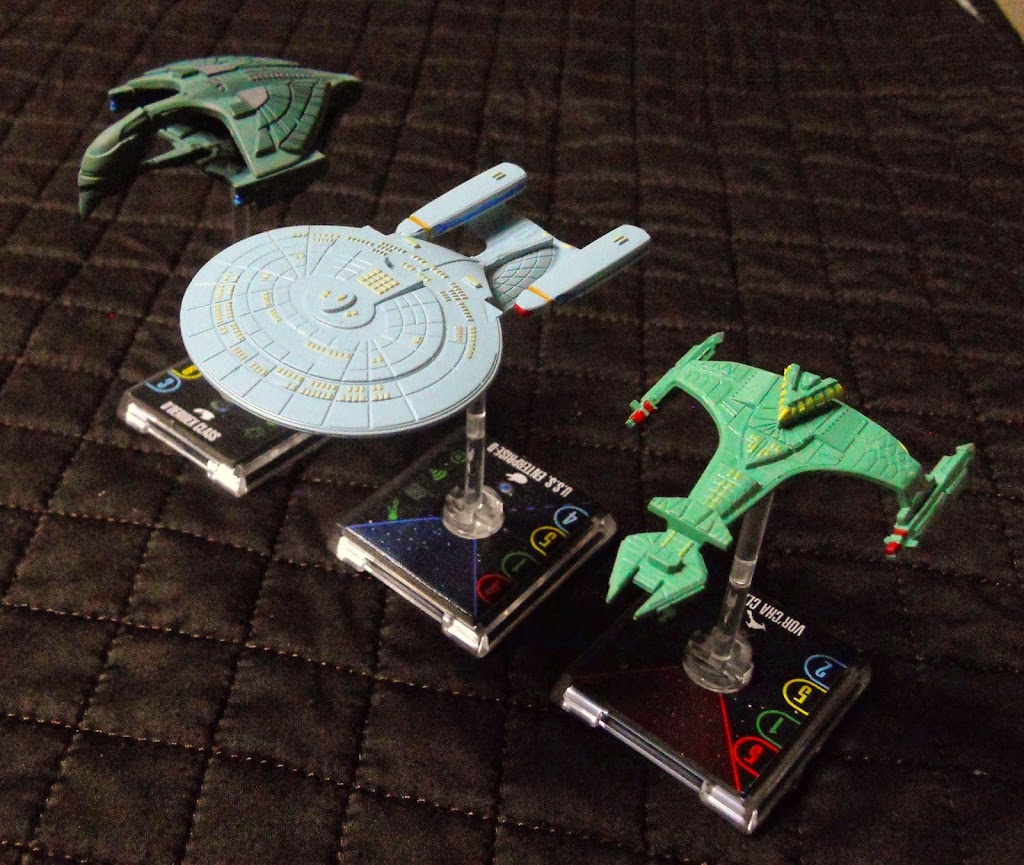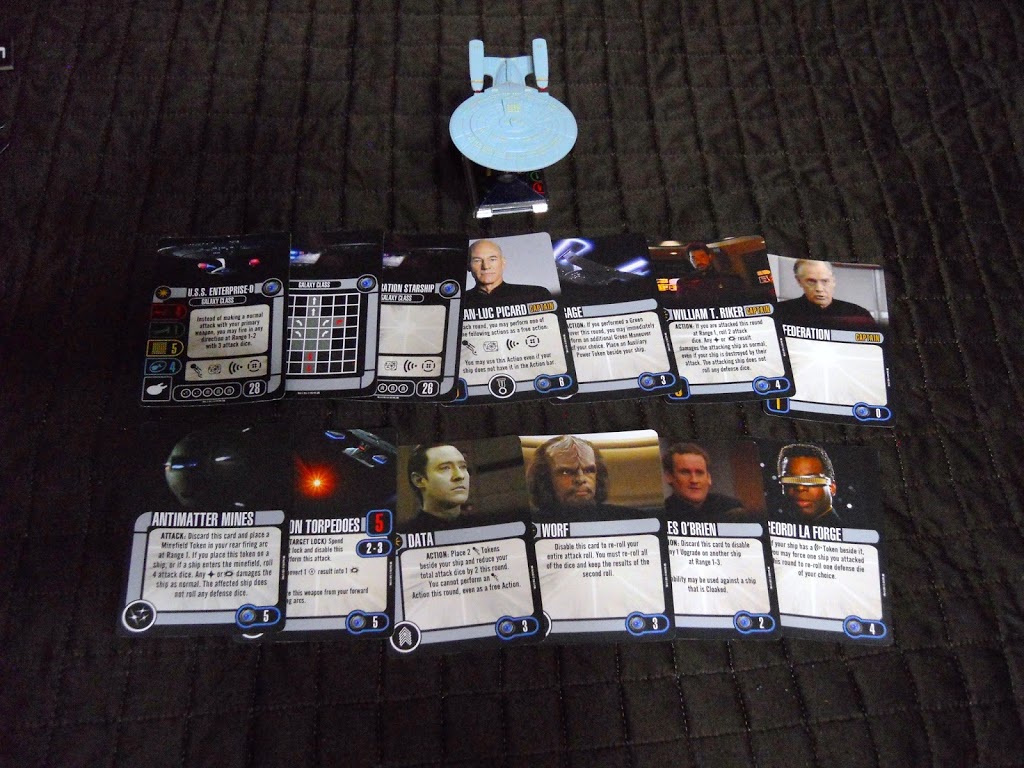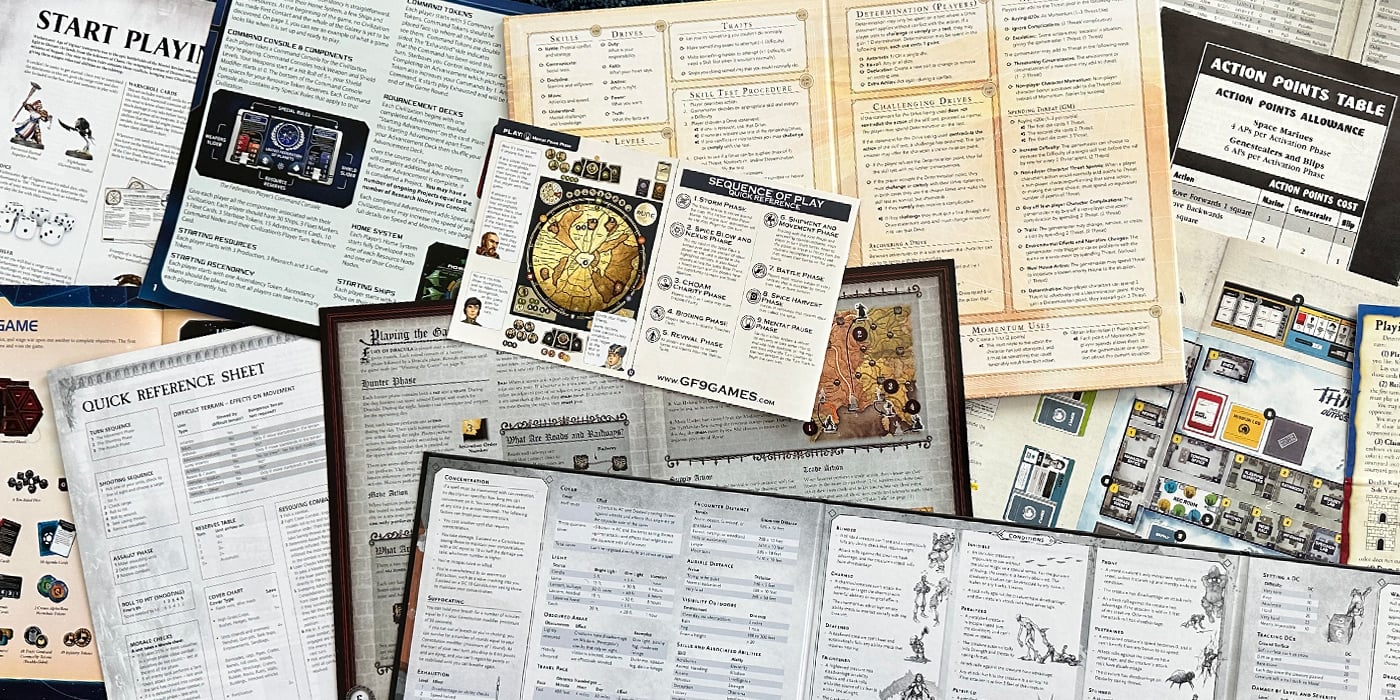Star Trek Attack Wing: Starter set Analysis Pt. 1

Lets take a closer look at last year’s Star Trek Attack Wing starter from Wizkids/NECA.
My focus here isn’t going to be so much on the physical components in the kit. I’m planning on analyzing the models and accompanying upgrades in the context of their usefulness in the game. However, to begin, I will comment briefly on the contents of the box. No, I’m not doing a full unboxing and I didn’t bother to take a ton of pictures since I don’t think it’s necessary. That shot up there from Wizkids shows you what you’re getting. And for the particularly curious, the components all have a semi-gloss linen finish.
It seems impossible difficult to discuss Attack Wing without referring back to its smash hit sister game X-Wing. If you read my last article on the subject, you’ll know that I reluctantly agree with the pretty much universal opinion that Attack Wing just isn’t as nice looking a game as it’s Star Wars counterpart. It’s not just the ships either. All the components just aren’t quite as good. The designers of X-Wing spent more time on layout giving all the tokens cool borders and other nice little touches like that. But everything in Attack Wing still works like it’s supposed to and I wouldn’t be wasting my time writing this if I didn’t think the game was just as fun. Comparisons aside, the Attack Wing starter is a great deal. It’s cheaper than most other multi-player mini game starters and the components are still very high quality. Yes it only has three minis, but it comes with tons of counters a bunch of very sturdy maneuver templates, custom dice, full rules, and a bunch of cards. Then there’s the fact that on it’s own it works as a stand-alone game that up to three can play.
I really don’t think Attack Wing itself is actually to blame for people’s negative impressions of its components. There actually quite nice taken on their own. It’s all X-Wing’s fault. If Fantasy Flight hadn’t done such a phenomenal job with it, I don’t think anyone would have peep to say about Attack Wing’s looks. We’d all just be ooh-ing and ah-ing about that awesome Star Trek game. Except for maybe the scale part. Man some of you guys just can’t handle that models out of scale thing. Really thought there’s just one thing you need to ask yourselves. Does the thought of taking the Enterprise out for a spin to lay the smack down on some snooty Romulans make you giggle like Data with a faulty emotion chip? If you answered yes you will not regret buying this game.
So now that I’ve sold you on Attack Wing lets get back to why we’re here: to investigate the usefulness of the minis and cards that come with the starter. There are some good Attack Wing Fleet Builders online, complete with rules if you want to look at the card rules in more detail. I use this one because I like how you can view the rules by expansion. And it’s pretty.
We’ll start with the Federation. It should come as no surprise that Attack Wing would want to start you out with the flagship of the Federation: the Enterprise D herself. She’ll set you back 28 points, which is a wee bit on the expensive side. Points in Attack Wing are calculated by adding all stats together and doubling that number, and the Enterprise’s are spread out pretty evenly with the exception of its agility, which like most ships, is set pretty low at only 1. Since a ship’s point cost is based on its stats, whenever you buy a named ship like the Enterprise with a special rule, that rule is basically free. In the case of the Enterprise, this free rule will allow it to ignore firing arcs and target any ship within range band 1 or 2, but only rolling 3 dice – one less than it’s normal Primary Weapon Value. Not only is this very forgiving to new players, it will allow experienced players to keep their opponents off guard.
You can also take the generic version of the Enterprise: a Galaxy Class Starship. It’s two points cheaper with one fewer shield but no special rule, so I don’t really see the point. But playing in some of the OP events, I’ve learned that you never know which ships might end up useful with the crazy scenarios they come up with. Both the Enterprise and generic Galaxy Class can do a pretty special Maneuver: the Reverse. In fact they actually have two reverses which can be made with either the 1 or 2 straight maneuver template. Both are Red Manuevers, but are nonetheless quite helpful.
The Federation portion of the starter comes with three options for captains. Obviously one of these is going to be Federation darling JLP. Good old Picard… He’s initiated first contact with 27 alien races, he’s served as the Klingon Arbiter of Succession, he runs a school for gifted youngsters, and he’s a super awesome captain. That captain skill of 9 will make Sisko and Janeway jealous, but it’s his special rule that makes him a staple. With Piccard at the helm, you can take an extra action from the following list: Evasive Maneuvers, Target Lock, Scan, or Battle Stations. With actions normally restricted to one per turn, you shouldn’t need me to tell you how awesome this guy is. A ship can perform those actions even if they aren’t printed on the card making him an even more interesting choice if you take him out of faction on a ship that can’t normally perform those actions. Just how good is Picard? At the first OP event I attended there was at least one JLP at every table.
He can also take an Elite Talent which is something not all Captains are able to do. Look for the little medal symbol on their cards to see if they’re eligible. Picard’s talent isn’t quite as useful as Picard himself. Engage, as it is appropriately named, allows you to use your Action to perform a Green Manuever, if your initial maneuver was also Green. Since Maneuvering is kind of one of those immutable laws of the game, being able to cheat it is incredibly helpful. But it will force you to put an Auxiliary Power Token by your ship. This makes it less helpful to me than just performing a normal “white” maneuver. And since you can only use it after a green maneuver, it makes opportunities for using it as a “do-over” limited.
Riker is a less interesting captain with a lower Captain Skill of 5 and a unique action that lets him make a little retaliatory attack but only if fired at in range 1, and only rolling 2 dice. Fortunately the ship that triggered the roll doesn’t get to try to evade. Potentially useful against cloaked ships with all their Defense Dice. However since a ship’s basic actions are usually pretty good, captains like Piccard whose abilities don’t eat an action seem stronger to me. Especially since there are Crew and Tech Upgrades that will give you still more action choices. And really, did anything good ever happen when Riker was left in charge?
The final Captain is just a generic Federation captain. Since every ship must have a captain, all factions have generic captains that are free and have a captain score of 1.
There are five more Federation upgrades in the starter: four crew, and one weapon. The enterprise can fit five upgrades, but only three of these can be crew, so one of your TNG faves will have to take some shore leave at Risa. I’d recommend keeping Geordi. If your ship scanned this turn, he can force an enemy ship to re-roll a Defense die. And it doesn’t require an action. He’s a pretty solid crew. Worf’s ability also doesn’t require an action so I’d keep him on board as well. Once per game you can discard Worf to re-roll all the dice in an attack. I like to picture them shooting him out of a photon torpedo tube with his Bat’leth but it’s probably nothing so exciting.
That leaves Data and O’Brien… Data can use an action to basically do a super evade, giving you two Evade Tokens instead of one but at the cost of two attack dice. It might seem inconvenient to lose those two attack dice, but not every ship has a cool 360 arc like the Enterprise. Data could be really useful on another ship when you have your butt to the enemy and won’t be attacking anyway. Or use his ability on a turn you drop your mines. O’Brien can be discarded to disable any upgrade on an enemy ship. Cards with abilities that work similarly to O’Brien’s are common but Miles can take target any upgrade in range 1-3 even from a cloaked ship. The downside is that Miles only disables upgrades, instead of getting rid of them completely. In fact guys like Miles are so important there even seems to be an arms race going on with them to the point where there are now other cards that prevent the loss of an upgrade even when something says it would go away.
Lets get back to those mines I was talking about earlier. Yes the Federation weapons upgrade card is Antimatter Mines. Leaving mines all over the galaxy doesn’t seem like a very Federation thing to do, but I guess once they found out how handy these things are they went with it. You can disable the Antimatter Mines as an attack to place the Mine Token in your rear arc at range 1. Only part of the token has to meet those restrictions. The rest of it can stick out wherever. If you place it on a ship or if a ship moves into it you can roll four attack dice against them that they aren’t allowed to defend against. What makes these mines really great is they can tag multiple targets when you place them. To top it off they protect your ship since anyone firing through the mine field token has their attack obstructed, letting you roll an extra defense die. Of course the minefield sticks around, so they can hurt you too. Definitely a lot of room for shenanigans with these things.
~ So that’s part 1. Check back soon and I’ll go over the Klingons and Romulans. In the meantime, do any of you Attack Wing vets still find yourself using the Enterprise?







